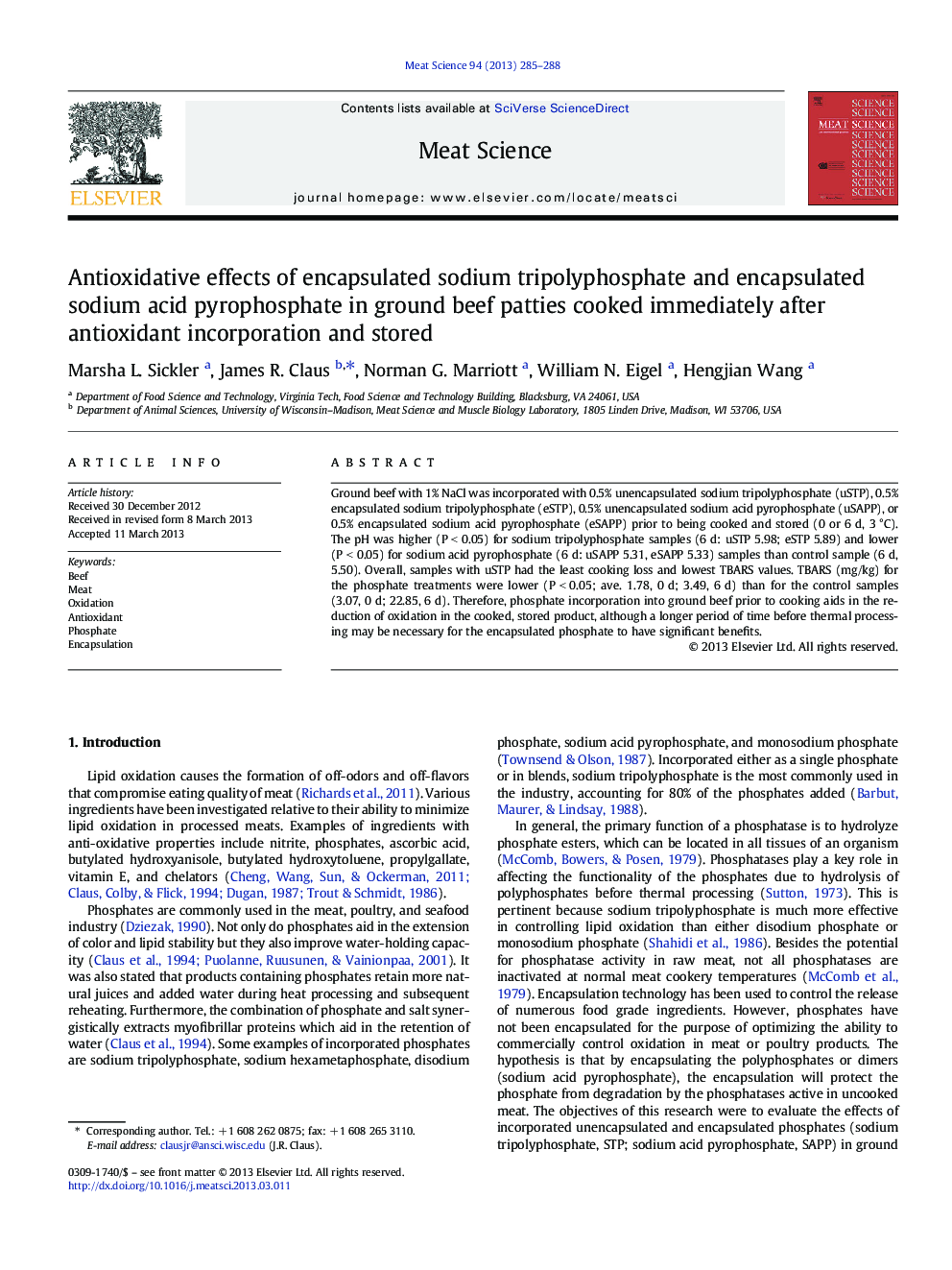| کد مقاله | کد نشریه | سال انتشار | مقاله انگلیسی | نسخه تمام متن |
|---|---|---|---|---|
| 2450053 | 1109617 | 2013 | 4 صفحه PDF | دانلود رایگان |

• Encapsulated polyphosphates are protected from meat phosphatases.
• Polyphosphates reduced lipid oxidation in the ground beef mix.
• To benefit from encapsulation extended raw meat contact time may be needed.
Ground beef with 1% NaCl was incorporated with 0.5% unencapsulated sodium tripolyphosphate (uSTP), 0.5% encapsulated sodium tripolyphosphate (eSTP), 0.5% unencapsulated sodium acid pyrophosphate (uSAPP), or 0.5% encapsulated sodium acid pyrophosphate (eSAPP) prior to being cooked and stored (0 or 6 d, 3 °C). The pH was higher (P < 0.05) for sodium tripolyphosphate samples (6 d: uSTP 5.98; eSTP 5.89) and lower (P < 0.05) for sodium acid pyrophosphate (6 d: uSAPP 5.31, eSAPP 5.33) samples than control sample (6 d, 5.50). Overall, samples with uSTP had the least cooking loss and lowest TBARS values. TBARS (mg/kg) for the phosphate treatments were lower (P < 0.05; ave. 1.78, 0 d; 3.49, 6 d) than for the control samples (3.07, 0 d; 22.85, 6 d). Therefore, phosphate incorporation into ground beef prior to cooking aids in the reduction of oxidation in the cooked, stored product, although a longer period of time before thermal processing may be necessary for the encapsulated phosphate to have significant benefits.
Journal: Meat Science - Volume 94, Issue 3, July 2013, Pages 285–288